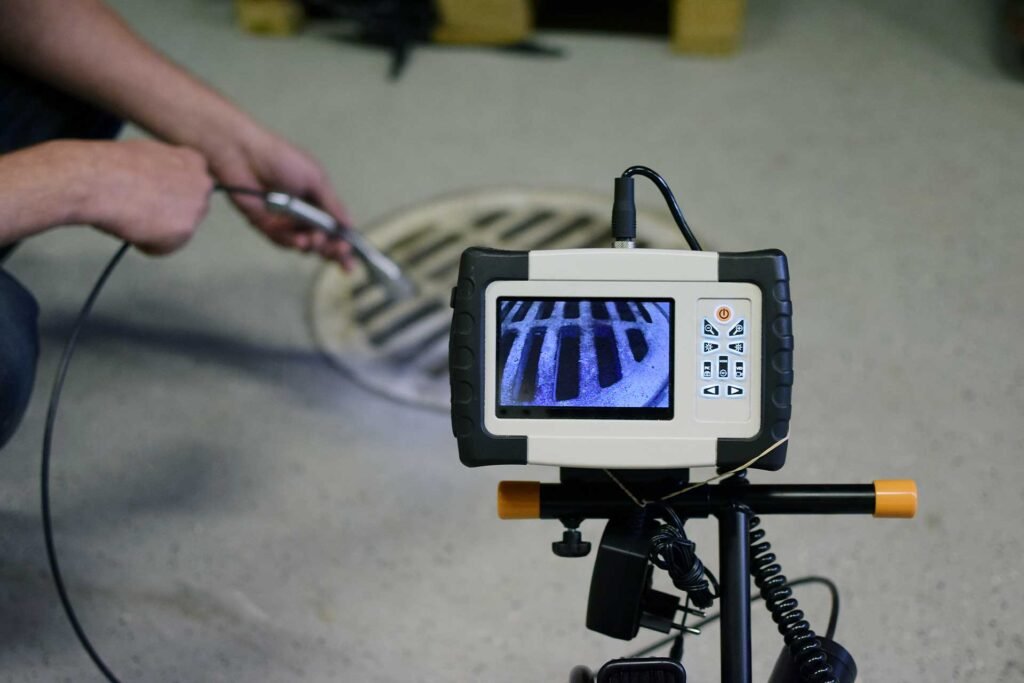Why Regular Drain Inspections Can Save You Thousands

Spotting Issues Early = No Emergencies, No Excavations, No Big Bills
Blocked drains, collapsed pipes, foul smells and flooding — by the time you spot the warning signs, it’s often too late.
But with regular CCTV drain inspections, you can catch problems before they become disasters — saving yourself thousands in repair costs, emergency callouts, and potential property damage.
At Vikings Building Solutions, we’ve seen first-hand how early detection through CCTV saves homeowners, landlords and businesses across Coventry & Warwickshire both money and stress.
The Real Cost of Ignoring Drain Issues
A small build-up or hair clog might seem harmless. But hidden out of sight could be:
- Tree root intrusion
- Grease solidifying into a fatberg
- A cracked or collapsing pipe
- Flushing damage from wet wipes or hygiene waste
Left untreated, these can result in:
- Drain excavations (£2,000+)
- Emergency callouts (£150–£400+)
- Flood damage to carpets, electrics or stock
- Business closures or legal liabilities (esp. food/hospitality)
👉 The average drain repair costs over £1,800 in the UK — and that’s if you catch it before it damages the building fabric.
What Is a CCTV Drain Inspection?
A CCTV drain survey uses a high-definition waterproof camera fed into your pipes. We see exactly what’s going on underground in real time.
At Vikings Building Solutions, our drain inspection includes:
- Live HD video feed through all accessible pipework
- Recording of defects, blockages, cracks or roots
- A written report and footage for landlords or insurers
- Free advice on maintenance or remedial action
No digging or mess — it’s completely non-invasive
When Should You Book a Drain Inspection?
You don’t need to wait for a problem to get a CCTV drain check. In fact, proactive inspections are the cheapest option.
✅ Ideal Times to Book:
- Every 12 months as part of maintenance
- When buying/selling a property
- If you own an older property (pre-1980s)
- If you’ve had repeat blockages or smells
- After building works or heavy storms
- For commercial compliance (restaurants, landlords)
Real Example: How We Saved a Client £4,000
A local café in Coventry reported a slow-draining kitchen sink. Instead of calling for unblocking only, we recommended a quick CCTV survey.
What we found:
- Fat and scale build-up
- A section of fractured clay pipe under a concrete floor
- Roots starting to grow into a joint
The solution: No digging. We cleared it with high-pressure jetting and applied patch lining — all done in under 2 hours.
Had it gone unnoticed, the next blockage would’ve burst the pipe under the floor — requiring a full excavation and closure of the kitchen.
Cost of proactive fix: ~£240
Cost of reactive fix avoided: £4,000–£6,000
🏠 Domestic vs Commercial: Who Needs It More?
Property Type | Inspection Frequency | Why It Matters |
Homeowner (standard) | Every 12–24 months | Early detection of fat, roots, damage |
Older home / clay pipes | Annually | Clay and cast iron often deteriorate |
Landlord (HMO or flats) | Every 6–12 months | Prevent liability from tenant damage |
Food businesses | Every 3–6 months | Legal compliance and hygiene |
Schools/Care homes | Every 6 months | Protect vulnerable occupants |
